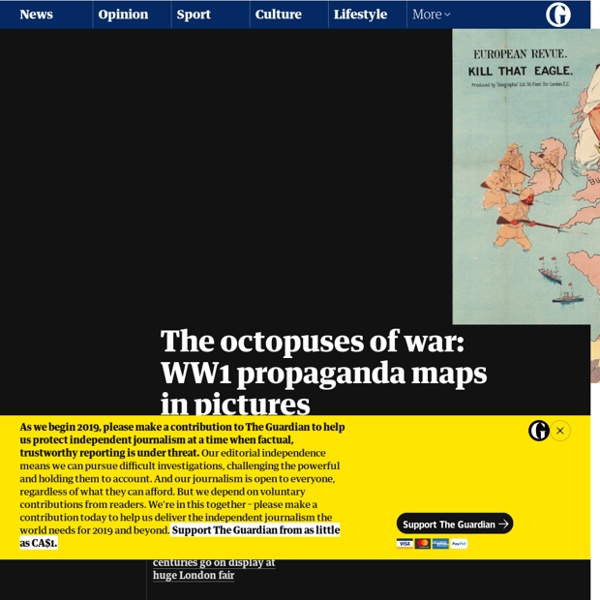



https://www.theguardian.com/books/gallery/2014/jun/03/war-ww1-propaganda-maps-in-pictures
Related: Maps • Perspective perceptionHere’s How America Uses Its Land Using surveys, satellite images and categorizations from various government agencies, the U.S. Department of Agriculture divides the U.S. into six major types of land. The data can’t be pinpointed to a city block—each square on the map represents 250,000 acres of land. But piecing the data together state-by-state can give a general sense of how U.S. land is used. Gathered together, cropland would take up more than a fifth of the 48 contiguous states. Donald Trump fans cry betrayal as he rebukes Capitol violence Donald Trump’s belated “concession” to a peaceful and orderly transition of power after the storming of the US Capitol has provoked anger and conspiracy theories among some of his most ardent followers. On social media channels and chatrooms like Parler and 4chan, where far-right Trumpists have gravitated as other social media sites have increasingly shut out the president, there were complaints of betrayal. Trump claimed on Thursday that he was “outraged by the violence, lawlessness and mayhem” of the Capitol siege that he had incited, and said those who “broke the law will pay” – comments that perhaps reflected concern over mounting legal and political hazard rather than a newfound sense of contrition and integrity.
Native cartography: a bold mapmaking project that challenges Western notions of place Aeon email newsletters are issued by the not-for-profit, registered charity Aeon Media Group Ltd (Australian Business Number 80 612 076 614). This Email Newsletter Privacy Statement pertains to the personally identifying information you voluntarily submit in the form of your email address to receive our email newsletters More generally, when visiting the Aeon site you should refer to our site Privacy Policy here. How to Fix the Supreme Court, Part One: C is for Clarence - PREVAIL by Greg Olear “If everyone made war only according to his own convictions, there would be no war,” Prince Andrei Bolkonsky thought… A good player who loses at chess is genuinely convinced that he has lost because of a mistake, and he looks for this mistake in the beginning of the game, but forgets that there were also mistakes at every step in the course of the game, that none of his moves was perfect. The mistake he pays attention to is conspicuous only because his opponent took advantage of it. —War and Peace (Leo Tolstoy, 1867)
Cowboy cartographer - pictorial maps Calif. Joseph Jacinto Mora knew all the dogs in Carmel-By-The-Sea, California. He knew Bess, a friendly brown mutt who hung out at the livery stables. He knew Bobby Durham, a pointy-eared rascal who, as Mora put it, “had a charge [account] and did his own shopping at the butcher’s.” He knew Captain Grizzly, an Irish terrier who went to town with his muzzle on and invariably came back carrying it, having charmed a kind stranger into taking it off. If you spend time with Mora’s map of the town—which was first printed in 1942—you’ll know the town dogs of that era, too. They’re all stacked in a column on the right side, lovingly described and illustrated, and looking as natural as those items you’d be more inclined to expect on a map: streets, land masses, the compass rose.
Fact-checking Hawley’s claim about Pennsylvania’s election law Sen. Josh Hawley of Missouri led the Senate charge against the electoral college certification of Joe Biden’s victory. Much of his argument was based on changes to mail-in voting in Pennsylvania. Hawley said that he objected to Biden’s win because Pennsylvania failed to follow its own state election laws. Three reasons to think twice about mapping the brain The brain has a geography that matters. The cerebral cortex (the grey outer layer of the brain) is folded into our skulls in such a way as to reduce the wiring length of our neurons and improve cognitive function. Needless to say, this folding is incredibly complex. What are deepfakes – and how can you spot them? What is a deepfake? Have you seen Barack Obama call Donald Trump a “complete dipshit”, or Mark Zuckerberg brag about having “total control of billions of people’s stolen data”, or witnessed Jon Snow’s moving apology for the dismal ending to Game of Thrones? Answer yes and you’ve seen a deepfake. The 21st century’s answer to Photoshopping, deepfakes use a form of artificial intelligence called deep learning to make images of fake events, hence the name deepfake.